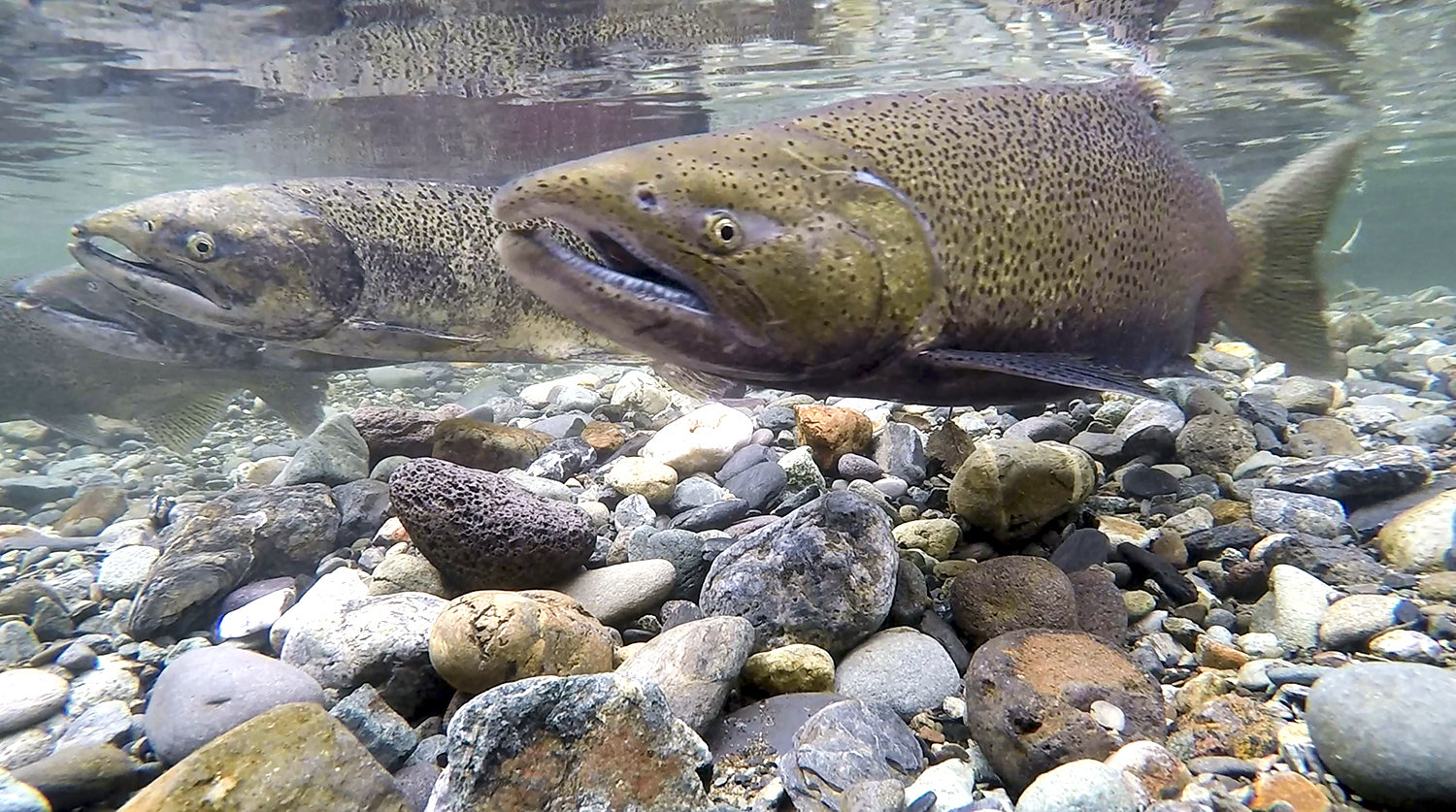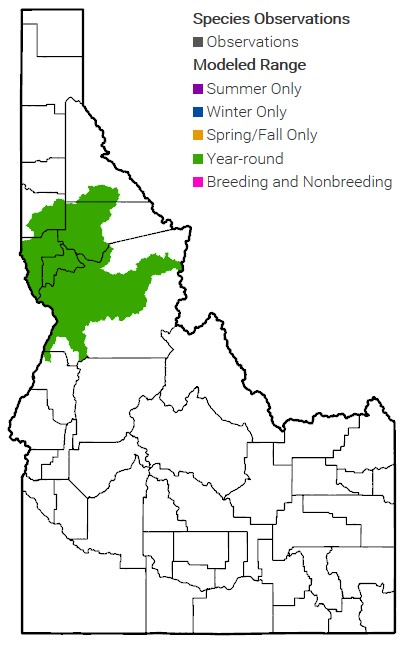ESA Status: Threatened – Designated Critical Habitat
The Snake River Evolutionarily Significant Unit (ESU) includes all naturally spawned fall-run Chinook salmon (Oncorhynchus tshawytscha) originating from the mainstem Snake River below Hells Canyon dam. The ESU includes the Tucannon, Grande Ronde, Imnaha, Salmon, and Clearwater River subbasins as well as several artificial propagation programs. “Run” refers to the timing of adult Chinook salmon migration from the ocean to their natal freshwater.
Snake River ESU populations have been declining since the late 1800s as a result of overfishing and dam construction impeding the fishes’ access to spawning and rearing habitats. By the late 1900s, less than 100 of natural-origin adults were returning each year. In 1992, the National Marine Fisheries Service (NMFS) listed the Snake River ESU as Threatened on the Endangered Species Act (ESA). Critical Habitat for the Snake River ESU was established in 1993. The Critical Habitat includes river reaches of the Columbia, Snake, and Salmon Rivers and tributaries of the Snake and Salmon Rivers presently or historically accessible to the Snake River ESU of fall-run Chinook salmon.
A Recovery Plan was released for the fall-run Chinook salmon Snake River ESU in 2017. The 2017 Recovery Plan determined human activities causing the loss of primary spawning and rearing habitats continue to be the greatest threat to the Snake River ESU. The most recent Five-Year Status Review of the Snake River ESU was completed in 2022 and determined the Threatened listing status remains appropriate.
Staff Contact
More Information:
Species Profile for Chinook Salmon – U.S. Fish & Wildlife Service

Photo Credit: U.S. Fish & Wildlife Service

Map Credit: Idaho Department of Fish and Game
 Official Government Website
Official Government Website